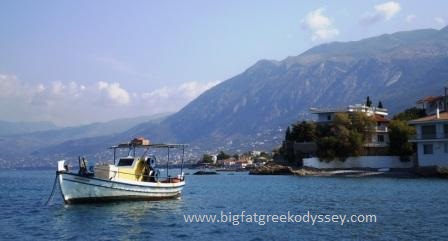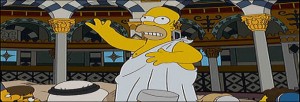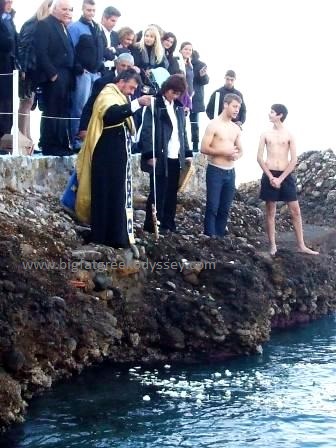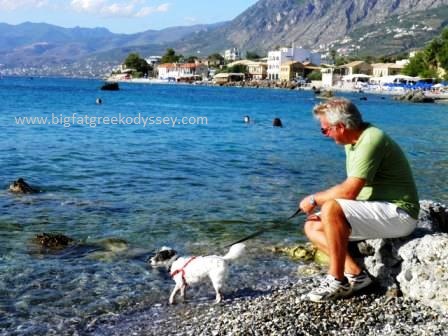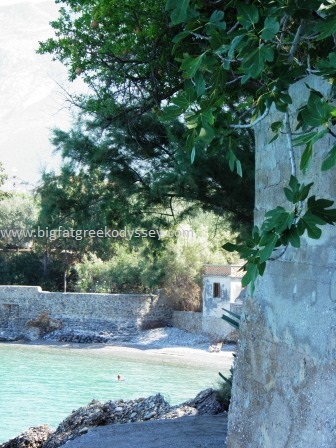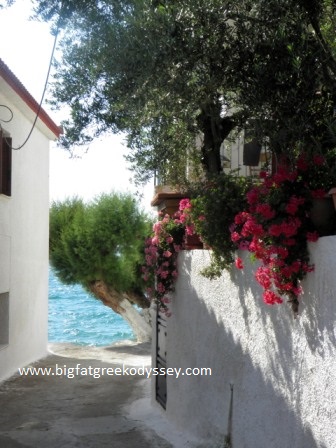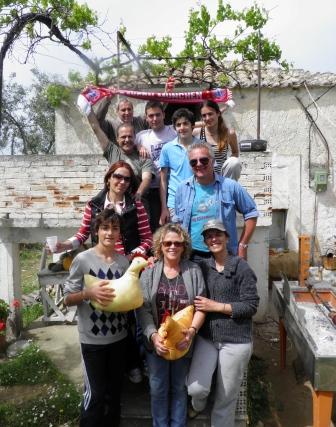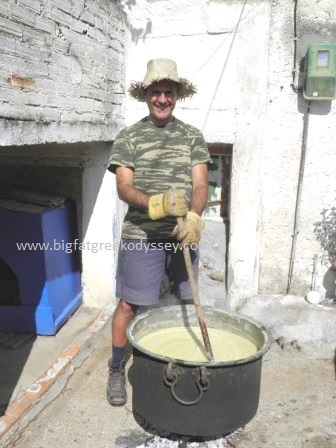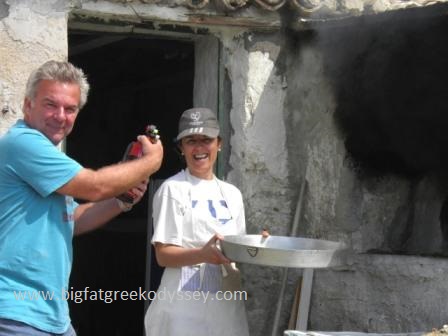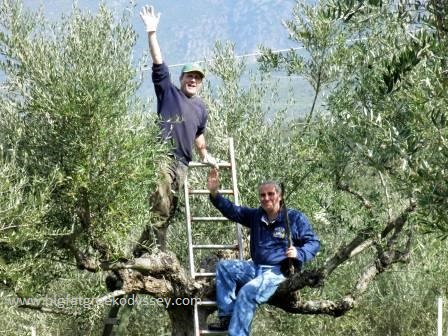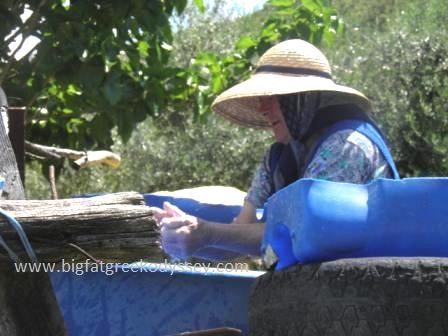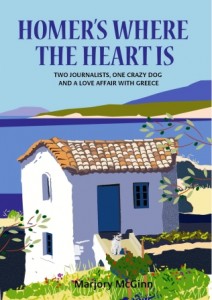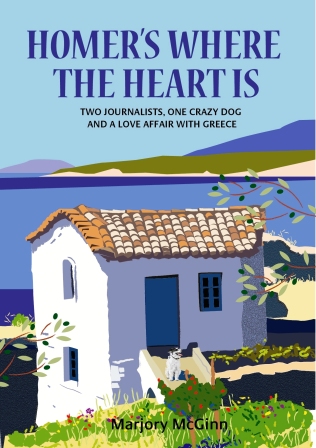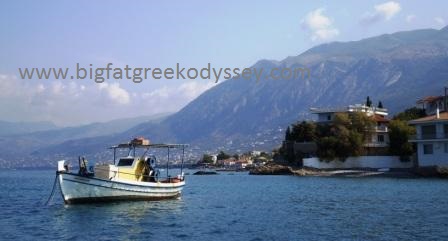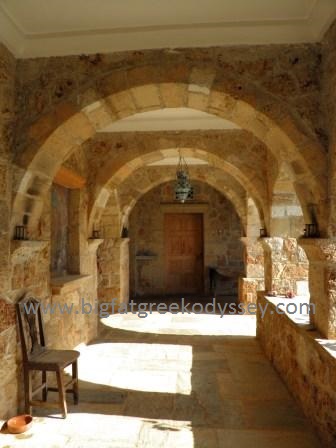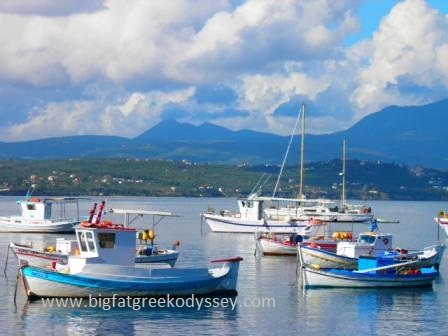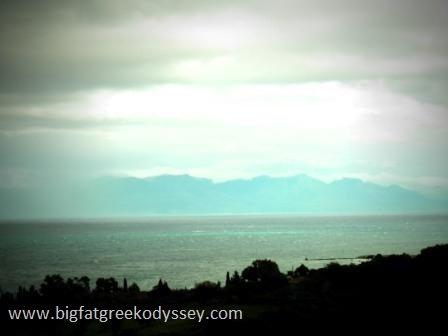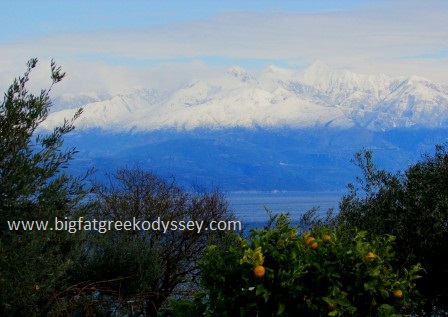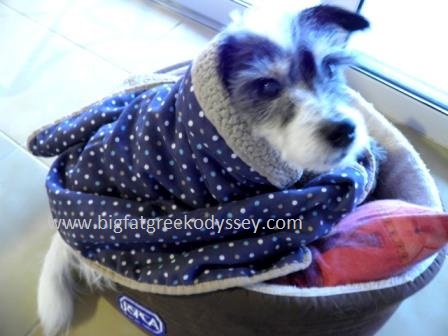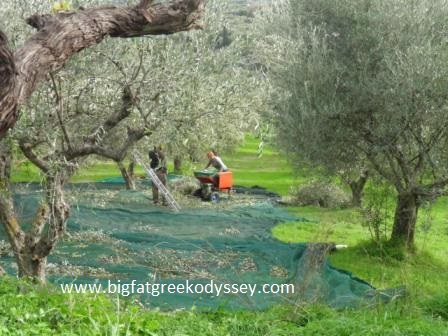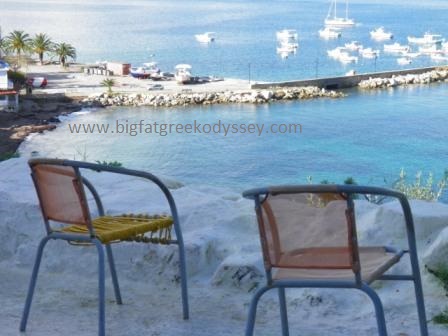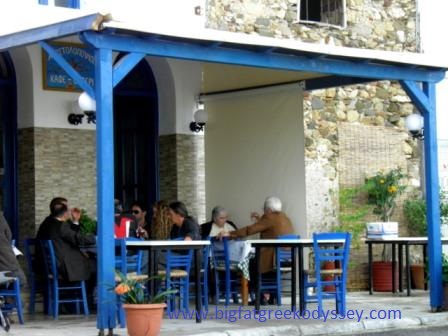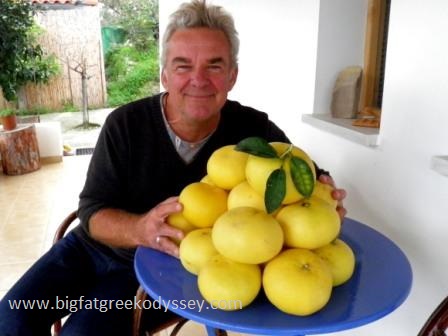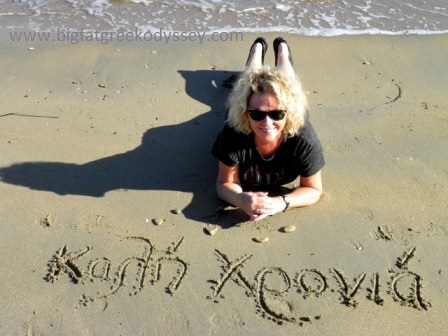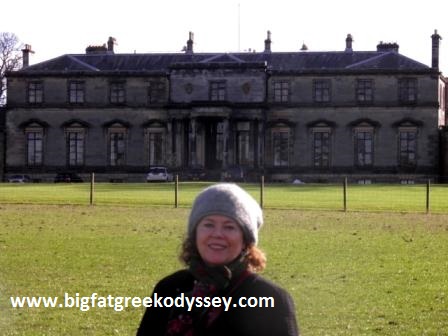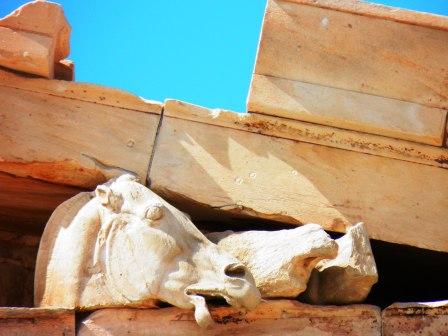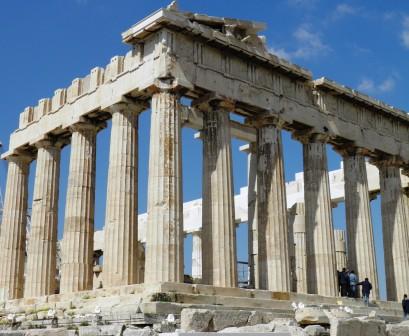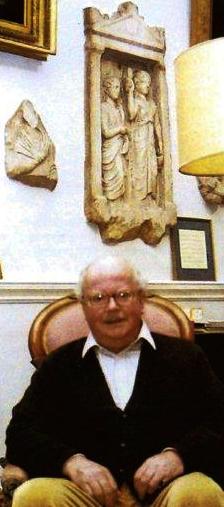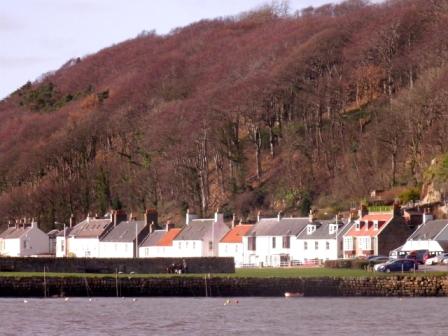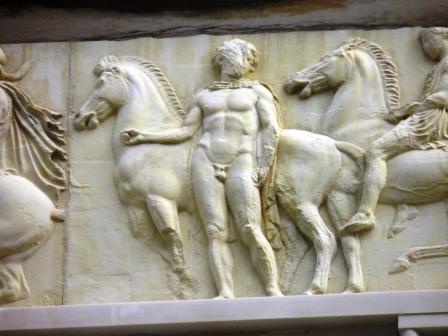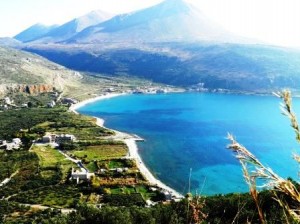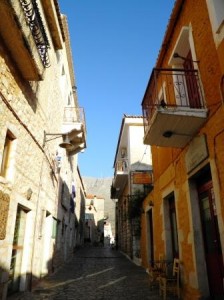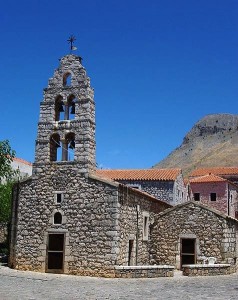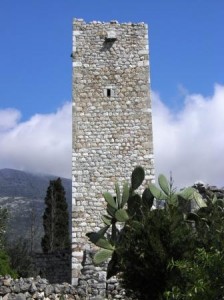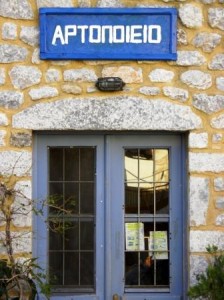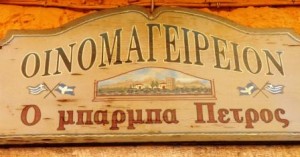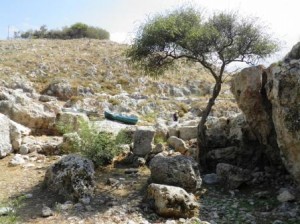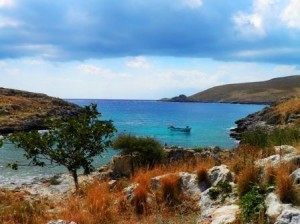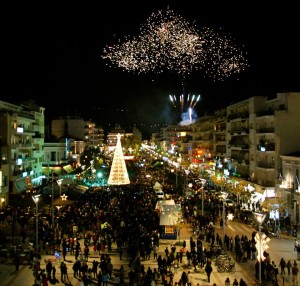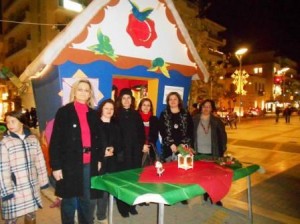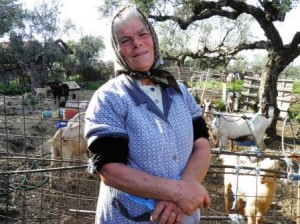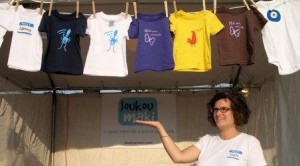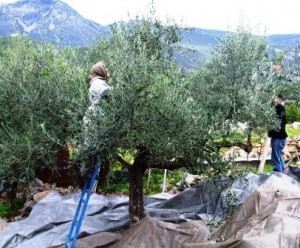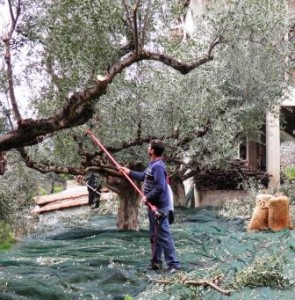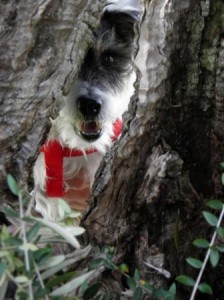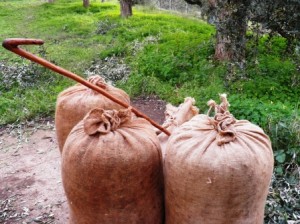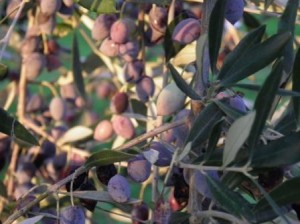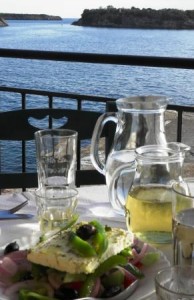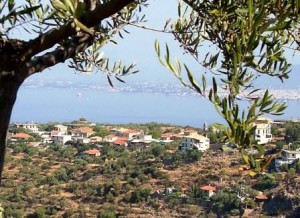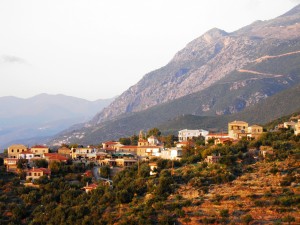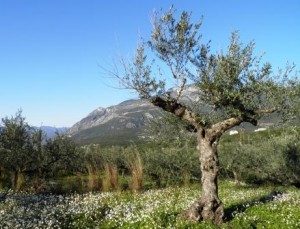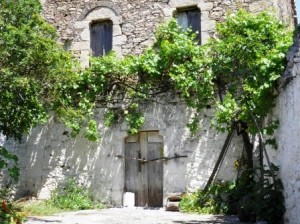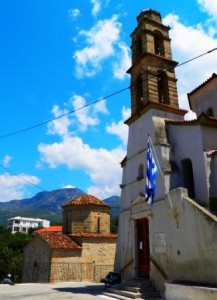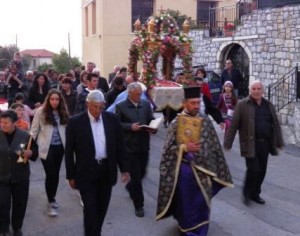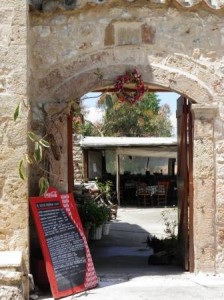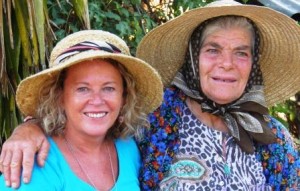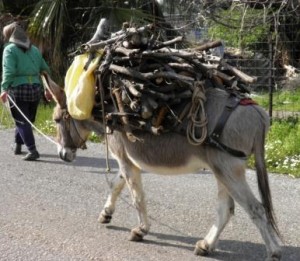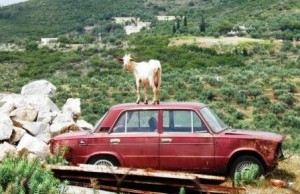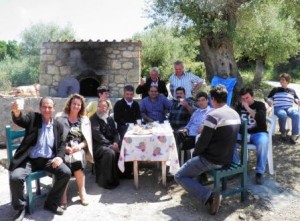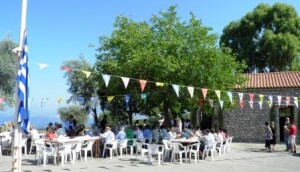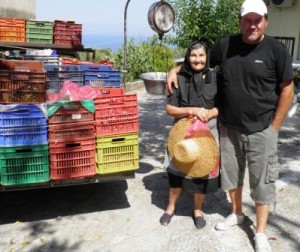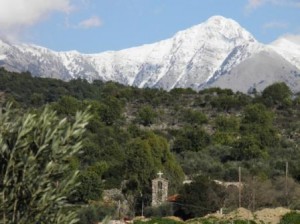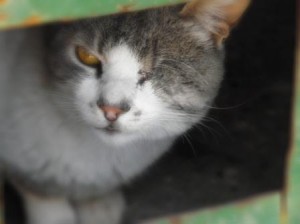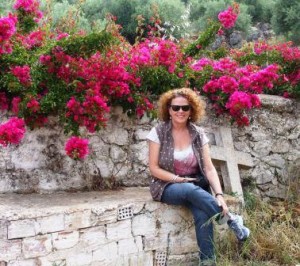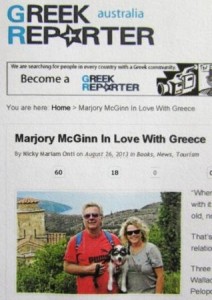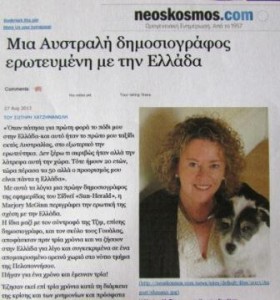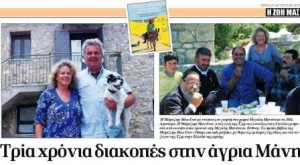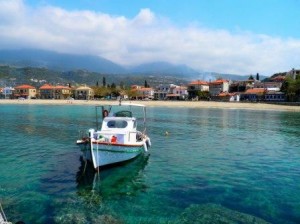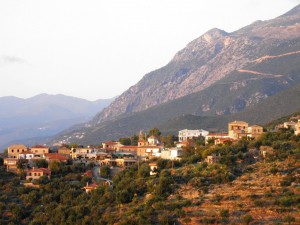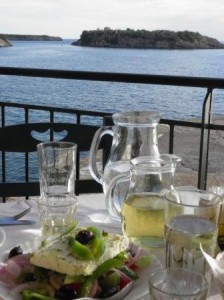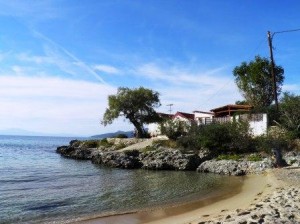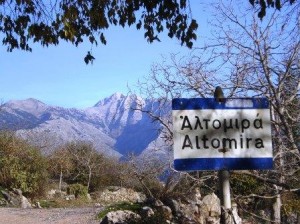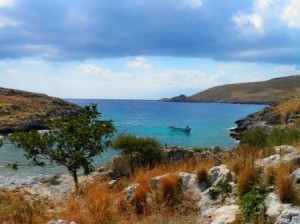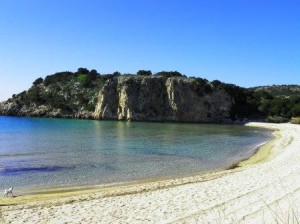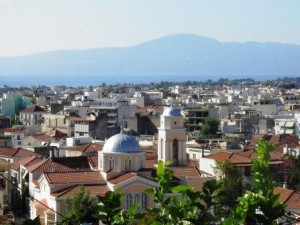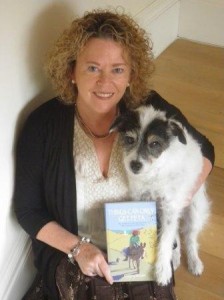THERE was a reason I put Homer into the title of my latest Greek travel memoir, Homer’s Where The Heart Is. And it has nothing to do with Homer and Marge Simpson, let’s clear that up right away, much as I love their goofball antics and Marge’s towering blue hairdo.
Homer, the slightly more venerable, and ancient Greek poet of the Iliad and the Odyssey (who lived in the 8th century BC), had a significant influence on the north Mani region of the southern Peloponnese, where we spent three years from 2010.
I’m not sure that Homer physically spent any time in the Mani – the middle peninsula of the southern Peloponnese. There’s no evidence of that, or Homer Simpson for that matter, despite the fact that the third episode of the first TV series in 1990 was called Homer’s Odyssey, when he became a citizens’ safety crusader. But as far as I know he hasn’t trudged the sylvan hills of the Mani.
As for Homer the venerable Greek, he named the area around the present day village of Paleohora, Iri (Ιρή), which is situated on the coastal strip just south of Kalamata and it is mentioned in the Iliad as one of the seven cities (including Kardamili further south) that Agamemnon offered to the angry Achilles to appease him. In its time, Iri had serious historic cachet.
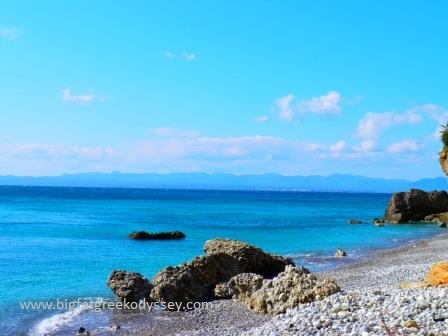
One of the coves at Paleohora with the Portella and a view towards the Messinian peninsula opposite.
Paleohora is certainly historic, settled from the Mycenean age, and in the Homeric years it had the important temple dedicated to Asclepios (the ancient god of healing) built on the high clifftop overlooking the gulf. Ancient relics have been found from this time and it was said that people came from all over southern Greece to be healed at this temple.
On the escarpment over a small pebbled cove is what was known as the Portella, a natural opening in the rock, where the sick could be lowered down to the sea below for treatment, and which later in the 17th and 18th centuries became an escape hatch for those fleeing from Turkish interlopers.
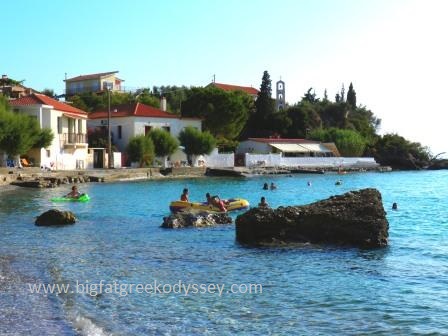
One of the three tiny coves at Paleohora that locals call Koukino with the church of Ayios Yiorgos behind.
A castle was built here in the 15th century by the Venetians, though only the north wall remains. The Orthodox Church of the Dormition was built here in 1775 and it is from here that the Epiphany (Epifania) service in January is conducted down on the beach below where young boys race to retrieve the cross thrown into the freezing waters. Whoever brings it back to shore will have good luck for the whole year.
The title of my travel memoir is of course a pun, and for those not familiar with the English expression, it’s a play on the saying, “home is where the heart is”. It seemed a fitting title for me because this spectacular Homeric land, including the hill village of Megali Mantineia – where I, my partner Jim and our mad Jack Russell Wallace – spent our first year, is a place that stole our hearts for the time we lived there, and still does. It’s a place of great natural beauty beneath the towering Taygetos mountains, but is also quite remote and not high yet on the tourist’s bucket list. Not as high as it should be.
Megali Mantineia was the focus of my first memoir Things Can Only Feta and I wrote a lot about it subsequently in media articles and on the blog, but I haven’t written much so far about the coastal area where Paleohora is situated and where we spent our next two years in the Mani.
Modern Paleohora is a small village with a few churches and a cluster of tavernas and kafeneia close to three small pebbly coves, which are unspoilt, with the remnants of the Portella still visible above one of them.
The coves here, like those of nearby Archontiko, Mikra Mantineia and Akroyiali, are close to the main road but some are so splendidly hidden from view that it is mostly Greeks who frequent them in summer. Mikra (Small) Mantineia was once a thriving village but its residents fled during the pirate raids of earlier centuries and moved up to the sister village of (Big) Megali Mantineia in the shadow of the Taygetos mountains. After Greece won the War of Independence against the Turks in the early 19th century, many of the hillside villagers moved back to the coast. Sometimes the migration was quite dramatic.
A narrow road from Mikra Mantineia will take you past a small olive press to Palia (Old) Mikra Mantineia, where a village on the saddle of a hill once sat and which was destroyed by an earthquake in the 1940s, after which most villagers fled to the coast. Most of the lovely old houses here, with courtyards and intricate balconies and doorways, lie in ruins. We found one house up there in 2011 that still had old family photos on the wall in a crumbling sitting room, and a kitchen with old utensils as if the place had been abandoned in an instant and had never been returned to, sadly. While there was a plan for a developer to totally renovate the village a few years back, it seems this has now been shelved due to Greece’s economic crisis.
Paleohora, however, is the place that seems to have the most history on this coastal strip, and many of the archaeological finds are now on display in the Archaeological Museum in Kalamata.
Scenes and characters that inspired Homer’s Where The Heart Is
We owe a great deal to the lovely family from whom we rented our house at Paleohora, with its olive groves and fruit trees and spectacular views of the gulf and the mountains. The couple I wrote about in Homer’s Where the Heart Is, Andreas and Marina, lived in Kalamata but spent a great deal of their spare time fixing up an old spitaki (little house) in the corner of the property which was the original house here and owned by Marina’s grandfather. We spent a great deal of time with this generous family.
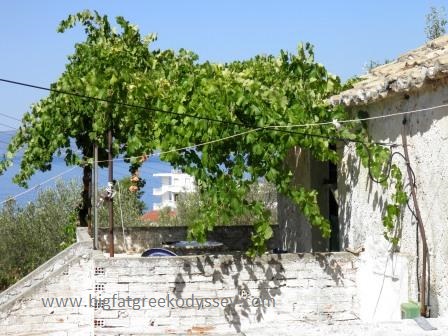
The old vine-covered spitaki with its big wooden table in the yard below was the focal point of life on the property.
It was in the yard of the house at the big wooden table, in front of the spitaki, that we shared many celebrations with the family, including Easter Sunday lunch, which became a chapter in the book. It was also where we watched the family making olive oil soap one year in an ancient kazani (cauldron), to an old village recipe, and where Marina would fire up the ancient fournos (oven) and cook various festive biscuits, like kourabiedes.
Most of the time Marina used dried olive branches and several times she slightly overdid things and created a fireball, with black smoke belching out of the front of the fournos.

Wallace and his new friend, the ‘she-wolf’ Zina, who lived at the Paleohora house and was mentioned in the book.
In the winter the family harvested their 80 olive trees with the help of local harvesters from outlying villages.
Despite the fact that while we lived in Paleohora as the crisis intensified to a heartbreaking level, particularly during 2011 and 2012, our stay was nothing short of inspiring and we owe much to this wonderful area and its people for giving us some of the best years of our lives.
Lastly, I couldn’t end a story without mentioning the inimitable goat farmer and friend Foteini, from the village of Megali Mantineia. While she was one of the star’s of the first book Things Can Only Get Feta, she makes several appearances in the second book, when I go to visit her at her ktima (farm compound), most memorably when I watch her crazy outdoor washing routine one hot summer.
Homer’s Where The Heart Is
TO read more about living in Greece during the crisis in the southern Peloponnese, read my second travel memoir Homer’s Where The Heart Is.
To help you along, Homer will be available to buy this week on a Kindle Countdown Deal from November 5 to 7 at 99p in the UK and 99c in the US. See links below.
This book is the sequel to the first, Things Can Only Get Feta (published in 2013) about the start of our long odyssey in the rural Mani.
To those who have already read the latest book, thanks for your kind comments and Amazon reviews, which are always appreciated.
Both books are available on all Amazon’s international sites and also on the Book Depository www.bookdepository.com (with free overseas postage).
On the website www.bigfatgreekodyssey.com you will also find a ‘books’ page with other information about the books.
To buy either of my books please click on the Amazon links below:
You can also find me on Twitter @fatgreekodyssey
And Facebook www.facebook.com/ThingsCanOnlyGetFeta
www.facebook.com/HomersWhereTheHeartIs
Last word: This blog has kindly been shared by American writer Amelia Dellos on the Women Who Write blog site. Thanks https://womenwhowriteblog.wordpress.com/2015/11/03/an-odyssey-in-homers-stomping-ground/
Thanks for calling by.
© All rights reserved. All text and photographs copyright of the authors 2015. No content/text or photographs may be copied from the blog without the prior written permission of the authors. This applies to all posts on the blog.
